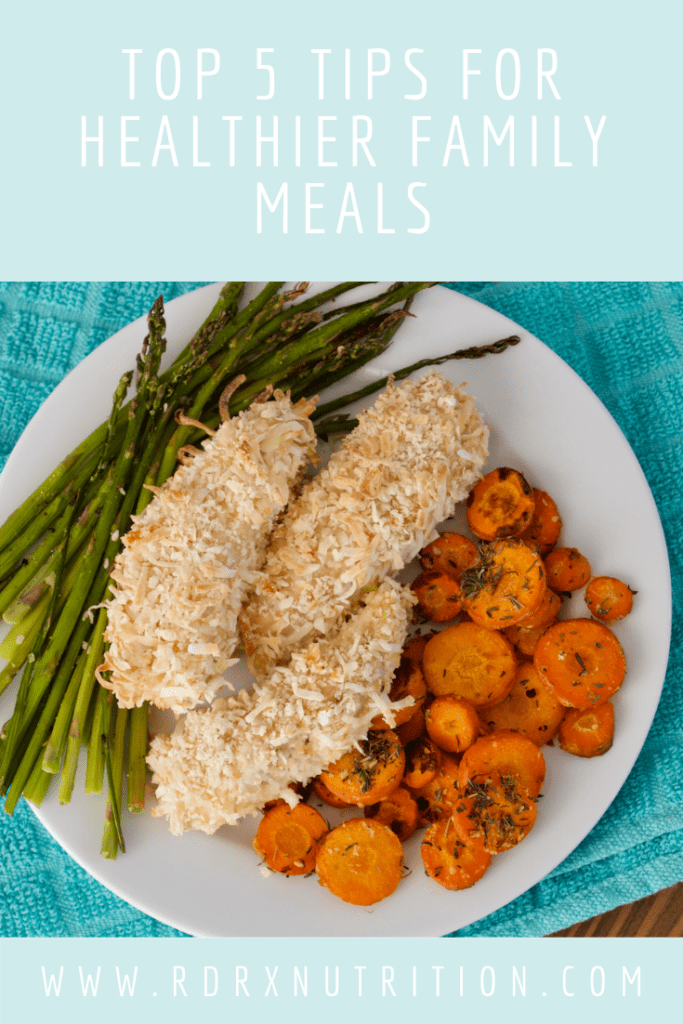Are you struggling with making balanced meals kid-friendly?
For many of my clients and their families, eating more fruits and vegetables can be a huge challenge. What’s more, under-eating foods that are rich in vitamins and minerals can contribute to deficiencies, chronic disease, and malnutrition. One of the first things I prioritize with family meal planning is rearranging the plate to include more plant-based foods. It’s important to make it fun and nutritious for the whole family!
5 Tips for Healthier Family Meals:
- Make choosing fruits and veggies a fun experience or a game. Firstly, get creative, it could be as simple as reading a book or creating a food focused activity. Try Dr. Seuss’s Green Eggs and Ham and add spinach to eggs. Secondly, make it a game, like wearing green or red to the grocery store and have your child pick out a piece of produce to match the color they are wearing.

2. Make mealtime a family time.
Whether you have a homemade sit down meal, are eating on the go or dining out, it’s not always easy to prioritize fruits and veggies. When you sit down with your kids at the dinner table, have discussion about how fruits and veggies can benefit their health. If you can pack snacks that include fruits and veggies, that’s a great way to sneak a serving or two in. Lead by example and prepare produce in ways you enjoy it! Don’t lose hope if they turn a food down the first time, sometimes it takes a few trials or a different method of cooking. In fact, exposure and showing them you do it too can go a long way.

3. Give them the opportunity and independence to choose. My favorite way to add vegetables is using them as toppings to familiar and fun meals. For example, on taco or pizza night, have multiple festive bowls full of veggie toppings for the kids to pick out what they want. This gives them independence, control and more choices. It’s important to respect your child’s appetite as well vs. forcing them to eat the healthier items on their plate.
4. Plan your snacks.
Letting kids munch all day on snacks that have little nutrition can lead to over consumption which can prevent them from having an appetite at meals. Furthermore, this could be a reason for disinterest in new foods. Snacks should include a colorful variety of cut up fruits and vegetables that are easy to eat. For example, try drawing faces on tangerines, ants on a log with celery and peanut butter, use Greek yogurt dips with pepper slices, change it up!

5. Sneak the fruits and vegetables in.
With all the new options like cauliflower rice and zucchini noodles it’s easier for parents to sneak veggies in. Even for adults this can be a great method. Don’t let this be your only strategy though, kids still benefit from learning ways to include fruits and vegetables so they don’t avoid them as they get older. Adding cauliflower rice to a sloppy joe mix, throwing spinach in a smoothie or using shredded carrots in a burger patty are all great additions to try.

Healthy eating is created by lifelong habits.
Starting early with your children can make a huge impact on their health. Equally important, remember to make it fun and get them involved! Be a positive influence and role model for you children but also your own health!
Lastly, need some healthier family meals and recipes?
Try my coconut chicken tenders or cauliflower pizza!
